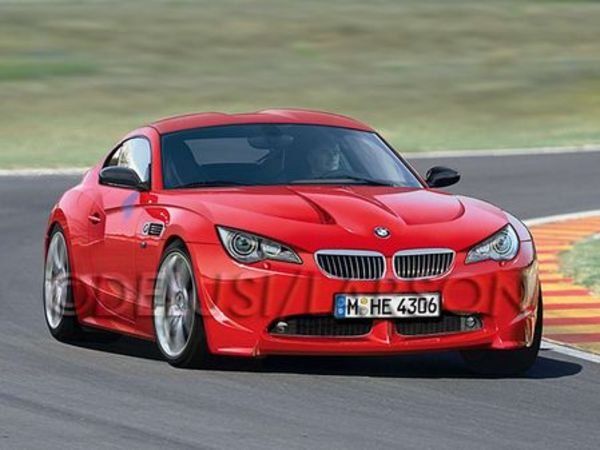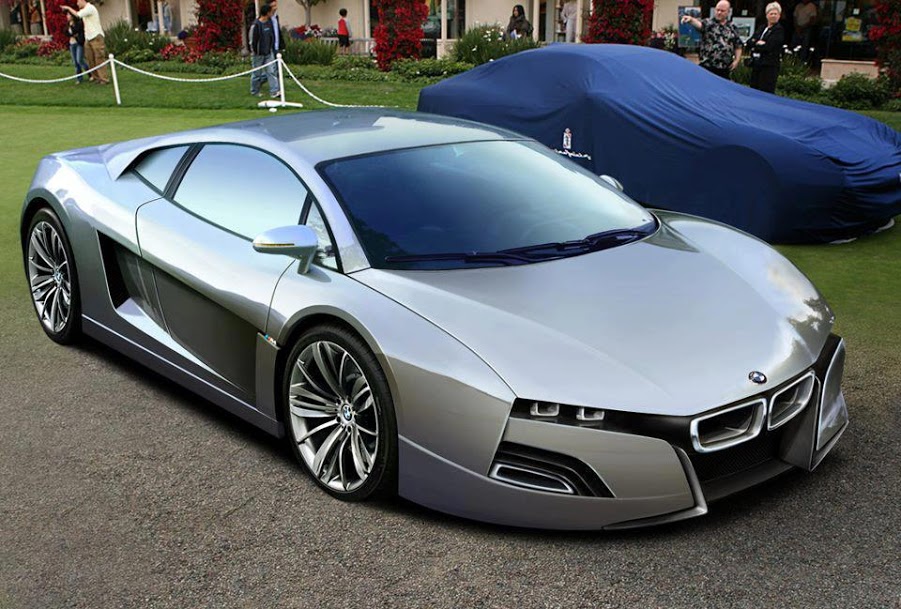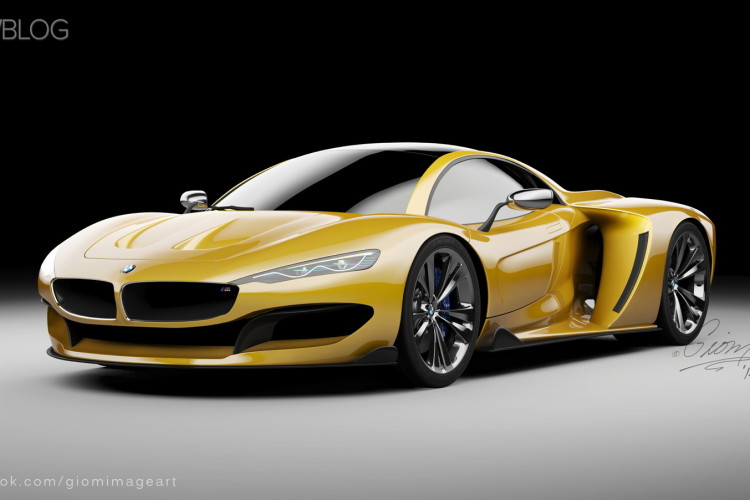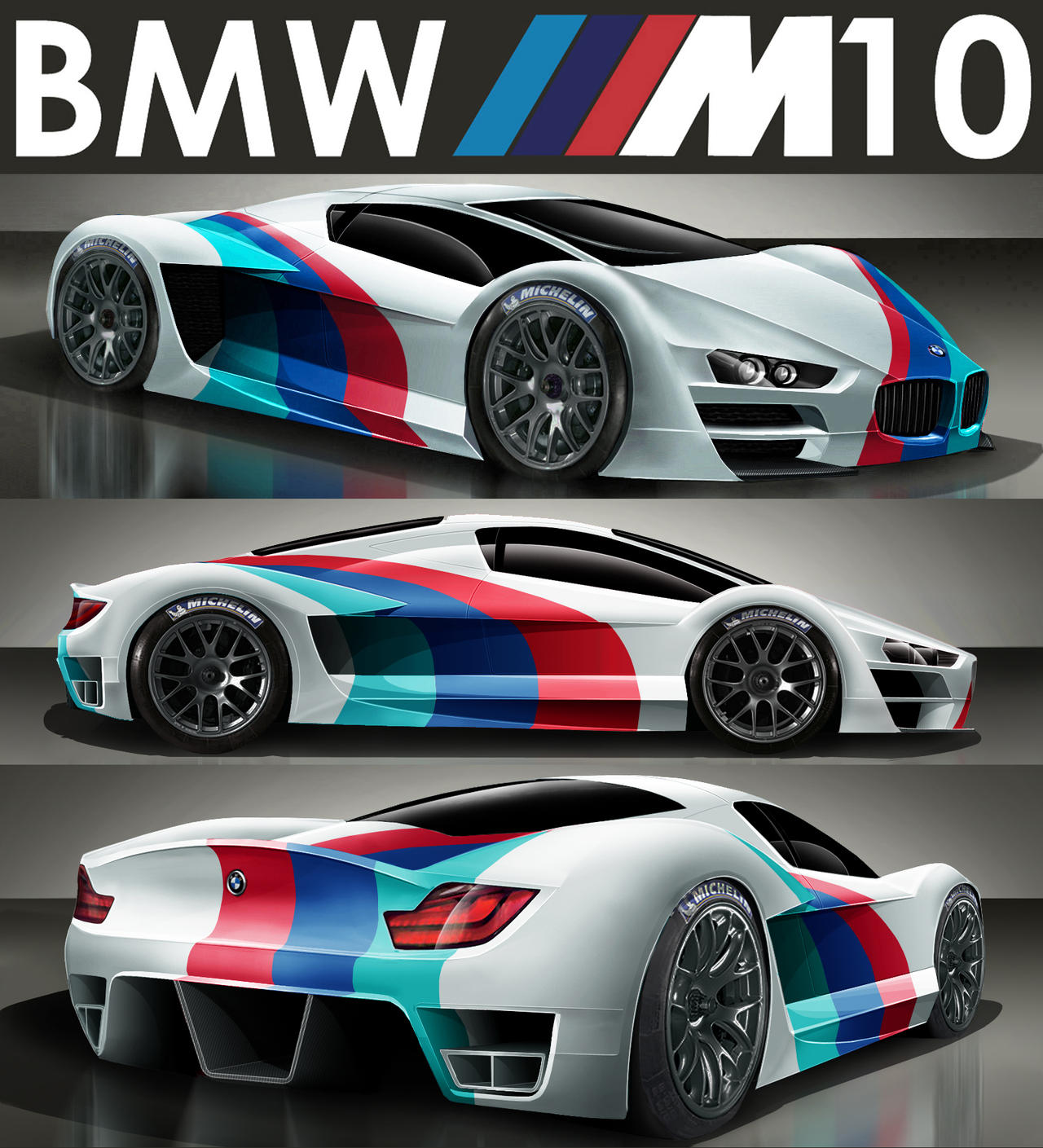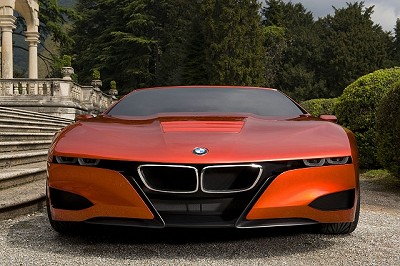BMW M10
The BMW M10 engine series is one of the German car manufacturer BMW.
It is a four- cylinder gasoline engine with an overhead camshaft that actuates each 2 V- shaped overhead valves per cylinder in cross -flow cylinder head via rocker arms. The M10 was first used in 1961 presented a new class of BMW and remained until 1987 in production. The fundamental design principle has been adopted in the development of the six-cylinder BMW M30, M10 also formed the basis for the BMW S14.
In his long career, the engine was also used in touring car in rally cars and single-seater racing. With the M12/13/1 * reached the engine in Formula 1 the early 80s its highest stage of development.
- 2.1 Formula 2
- 2.2 Formula 1
Series engines
Nomenclature
From 1963, new rules for naming new vehicle and engine projects were introduced at BMW; Vehicle projects received a Exx and engine projects a Mxx, where the letter was in each case followed by a number starting at 01. This has not yet been applied for the first four-cylinder engines of the New Class, as the original M113 engine has been developed in the late 1950s, this was then further developed to M115, debuted in the BMW 1500 in 1961; until the turn further developed two-liter engine of the BMW 2000 then was named M05 in 1965. The numbering system followed none but was purely chronological.
Since the late 1970s this system had reached under 100 short of numbers, a new grading system was introduced with retrospective effect from 1980:
For the individual business units, different codes have been defined: M (now also N) stands for " BMW AG / cars ", S stands for " Motorsport GmbH ", A stands for " motorcycle " and W for " marine, stationary, etc. ". So got the motorsport and racing engines preceded by the letter S, the following number is based on the first digit in the base family; So the S14 is based on the M10 and S38 on the M30. This system is used by BMW until today. To better distinguish the engines of 1963-1980 are often marked with a *.
Engine variants
Was constructed by Alexander the engine of Falkenhausen of an engine with 1.5 liter displacement designed instead of the commissioned 1.3-liter engine, while already einplante an increase in displacement of two liters.
For mixture preparation of the original 1.5 - liter engine with 75 or 80 hp was a carburetor. In this basic concept followed variants with 1.6, 1.8 and 2 liters capacity. With single - carburetor, the two-liter engines came to 100 hp, which fitted with two twin carburettors BMW 2000 CS / 2000 TI / 2002 TI reached 120 hp. The models 2000 and 2002 tii tii with mechanical ball Fischer- injection came to 130 hp. The presented in 1973 BMW 2002 turbo even reached 170 horsepower by a turbocharger.
In the late 1980s in the BMW M3 ( E30 series ) was the BMW S14, four-valve, then expanded only 2.5 to 2.3 liters and already in the standard version over 200 hp. The S14 is based on the design on a slightly modified M10 engine block and cylinder head of a shortened six-cylinder BMW M88 * ( which was also used in the BMW M1). He had like this individual throttle butterflies, but an electronic rather than a mechanical injection.
- BMW M10 series and tuning engines
M10 engine of BMW 2002 turbo with ball Fischer- injection
M10 engine BMW 2002 tii Alpina A4 with ball Fischer Alpina single injection and throttle system
M10 engine with Schnitzer 16V cylinder head in a BMW 2002
M10 engine of BMW E30 with Pierburg 2BE carburettor
M10 engine of BMW E30 with L- Jettronic
Racing engines
While BMW let the matter rest in the series engines up in the 1970s with 2 valves per cylinder, the European Touring Car Championship ball Fischer- injection with individual throttle valves or slide plates and four-valve cylinder heads came over for use. In the formula 2 (where the motors based on the M10 were extremely successful ) and the German Racing Championship were thus already 300 hp possible. During this time, Schnitzer Motorsport has developed a four-valve cylinder head for the BMW M10, all other four-valve engine came from the factory. This was primarily designed for use in touring cars and rally cars from BMW Type 02.
Formula 2
1966, the new Formula 2 racing engine BMW M10 * was finished imagined by Ludwig Beck apple four-valve cylinder head. Derived from the production engine of the BMW 2000, the DOHC -16V -2 -liter engine had a ball Fischer- injection and a flat slide system. The engine capacity was 1990 cm3 ( bore x stroke: 89 mm x 80 mm ), its maximum torque of 236 Nm reached the motor at 8000 min -1. The maximum power ( 260 hp ) specified with 191 kW at 8500 min -1.
Alexander Falkenhausen used the M10 * for his world record runs with the BMW F1 2000 ( chassis Brabham BT7 ) over 500 meters and the quarter mile. In addition, the M10 * in the " Monti " Spider Mountain ( Lola T120 ) was used.
The theoretical benefits of apple Beck- cylinder head design consisted in a very good gas exchange by maximum valve openings and thermal insensitivity due to the non-adjacent exhaust valves. The drawbacks of this motor were next to an unfavorable ratio of hub bore and channel diameters as well as the extremely complex valve drive, inter alia, necessary due to the large volume of the hemispherical combustion chamber superelevation of the piston crown in order to achieve sufficient densification, which, however, had an increase in the piston weight result. In addition, the milled into the piston bottom valve bags made for a total of rugged combustion chamber and the charge-exchange advantage inverted at low speeds into its opposite, as the Einströmgasgeschwindigkeiten were too low by the large valves in the cylinder and it came more in inadequate fresh gas charge. The engine was therefore in racing - apart from some acceleration records - granted no special achievements.
The contemporary Cosworth four-valve engine with the simpler, roof shaped combustion chamber with parallel overhead valves and flat top showed that a corresponding power output was also easier to reach. Under the direction of Paul Rosche was the first 1968 BMW M12 * constructed with diametrically (crosswise) opposite inlet and outlet valves. He was with the regulations accordingly reduced to 1.6 liter used in the formula 2 in the BMW T102. To further improve performance, this engine was later fitted with three spark plugs per cylinder, the Lucas injection of the formula 2- apple Beck- M10 was replaced by a ball Fischer- injection. The BMW first used during the 1970 Formula 2 season M12 / 2 * then had the now common valve scheme with adjacent parallel overhead valves same function.
In 1973 it the very successful four-cylinder four -valve engine with the designation BMW M12 / 6 *. After the rules change the formula 2 now with two liters of displacement, the engine reached up to 330 hp and served as the base for the large four-valve six -cylinder racing engines of the type M49 *. The two-liter four-valve engine used in the BMW 2002 racing touring and rally cars, however, were by Schnitzer Motorsport. In contrast to these were the factory four-valve BMW M12 / 7 * Intake and exhaust tract on the ' wrong ' side ( exhaust left instead of right, intake manifolds right instead of left). The BMW M12 / 7 * Formula 2 engine of 1976 reached its maximum torque of 251 Nm at 7500 min -1 and its maximum power of 315 hp at 9500 min -1.
Formula 1
On 24 April 1980, BMW announced that the company wants to get involved as an engine supplier for Formula 1. BMW engine design engineer Paul Rosche designed the BMW M12/13 *, reduced from a four -cylinder engine block to 1.5 liters four-valve engine, which contributed, through turbochargers and special fuel mixture initially about 488 kW ( 650 hp). In the course of further development of the engine reached up to 1029 kW (1400 hp). and was thus at the same displacement emit 20 times the performance of the basic model. In the engine, an electronically added mechanical ball Fischer- injection was used.
The premiere at the pinnacle of motor sport celebrated the engine on January 23, 1982 Nelson Piquet and Riccardo Patrese Brabham BMW in the season opener at Kyalami. In the fifth race of the new engine on May 9, 1982 Piquet picked fifth in the Belgium GP, the first World Championship points. Claimed his first win of the Brazil on June 13 during the 1982 Canadian Grand Prix in Montreal, the first pole position on August 15, 1982 in Zeltweg.
In the Formula 1 1983 season BMW came with the British team, the first Formula 1 World Championship title with a turbo engine. Since the first use of the BMW M12/13 * had passed 630 days. After BMW's withdrawal in 1986, the engines were used in Formula 1 under the name Megatron until the ban on turbo engines in 1989.





